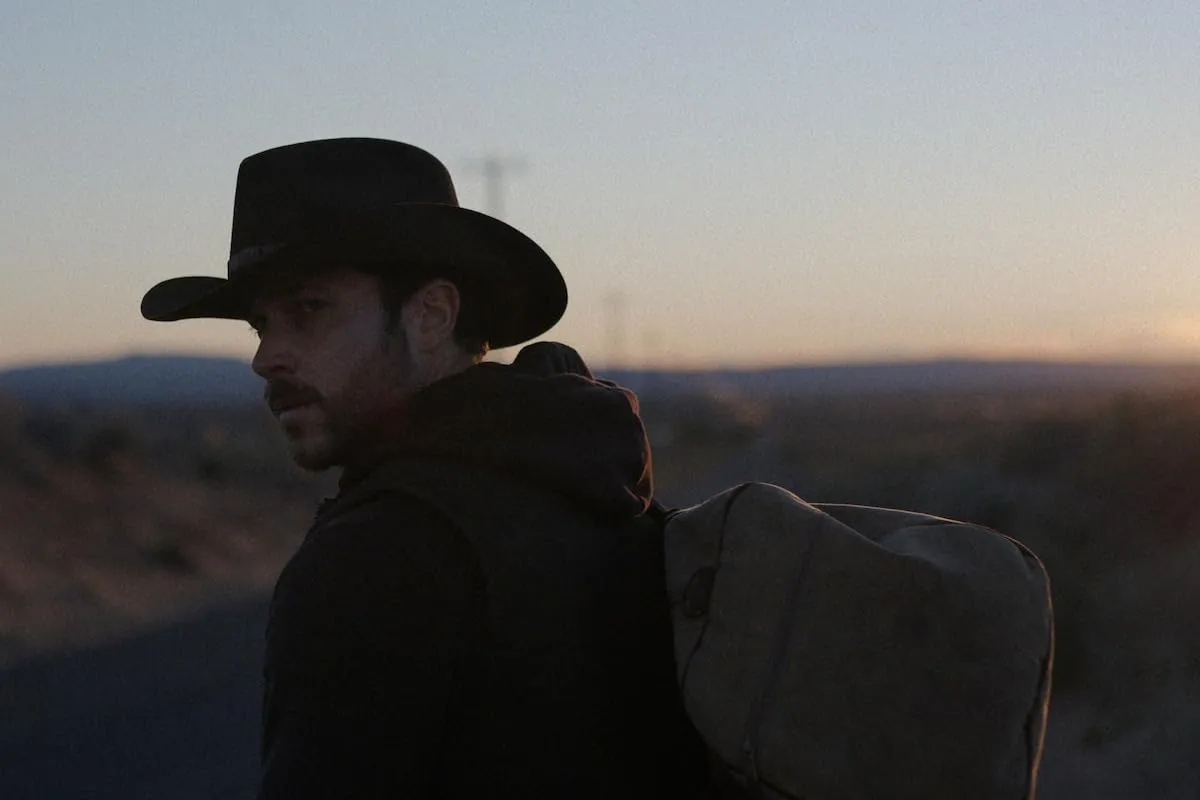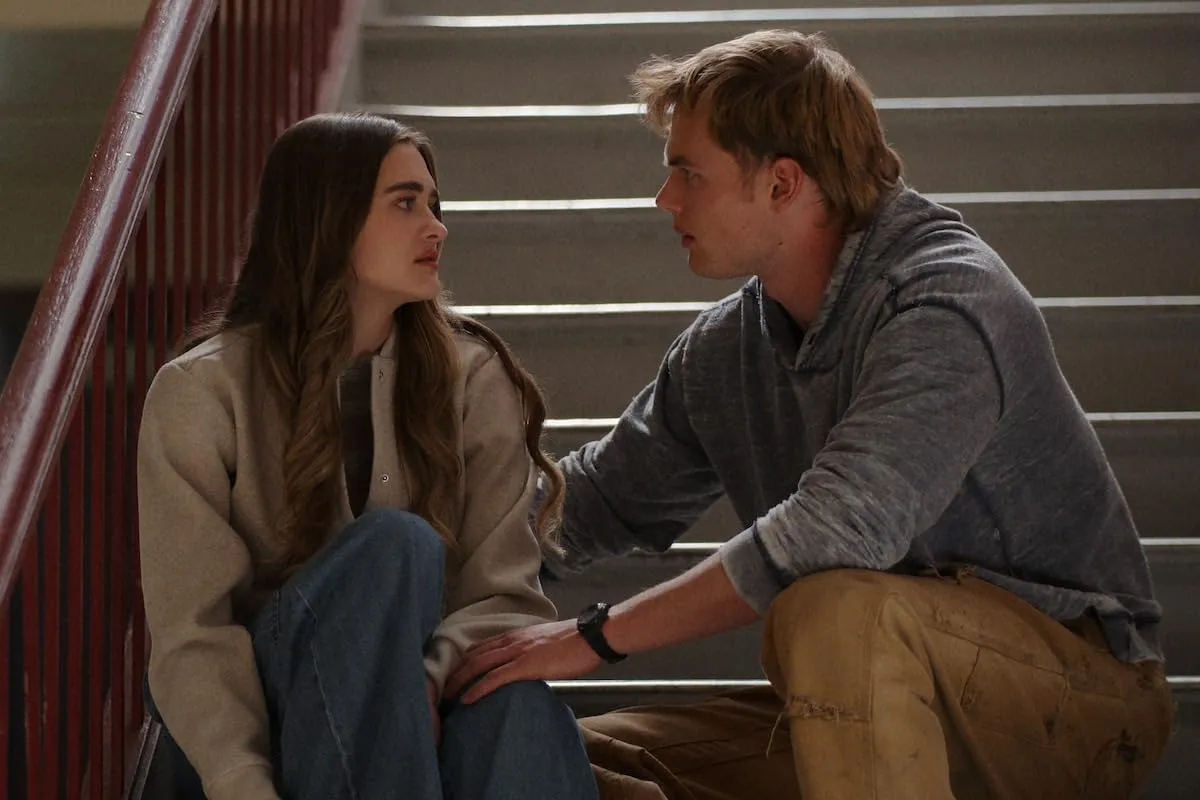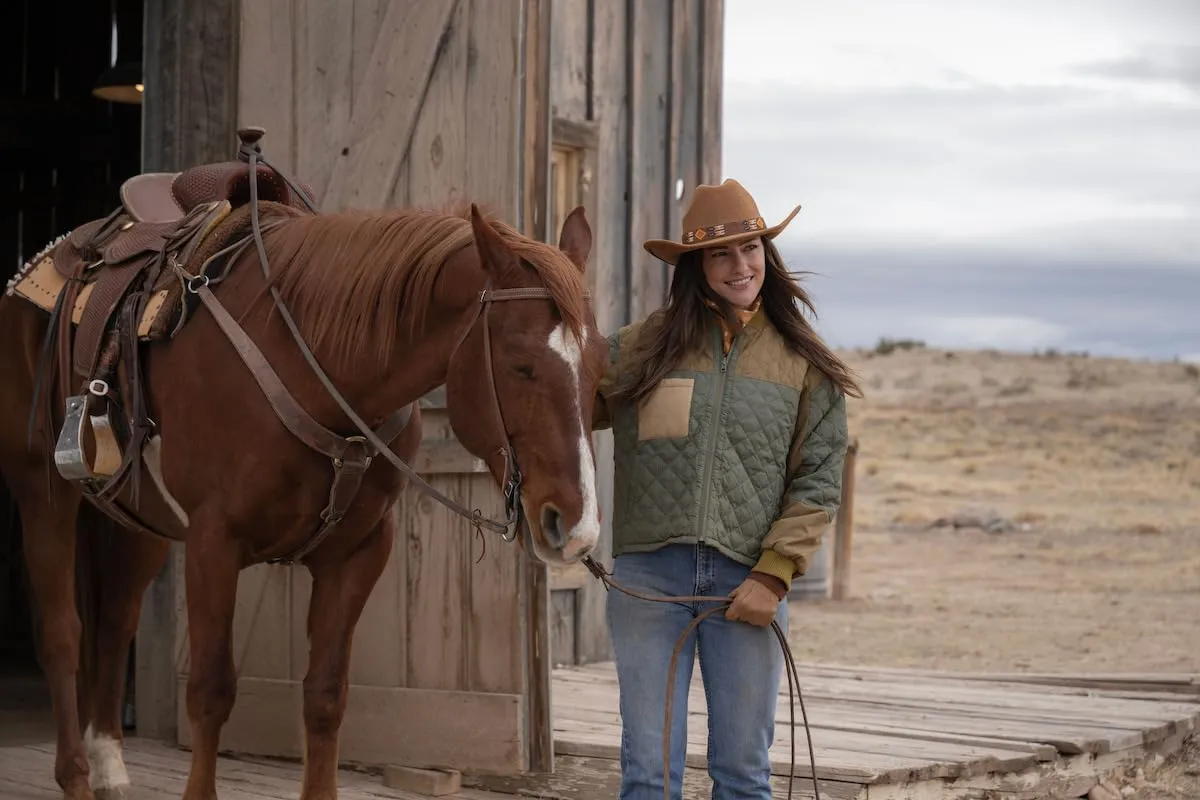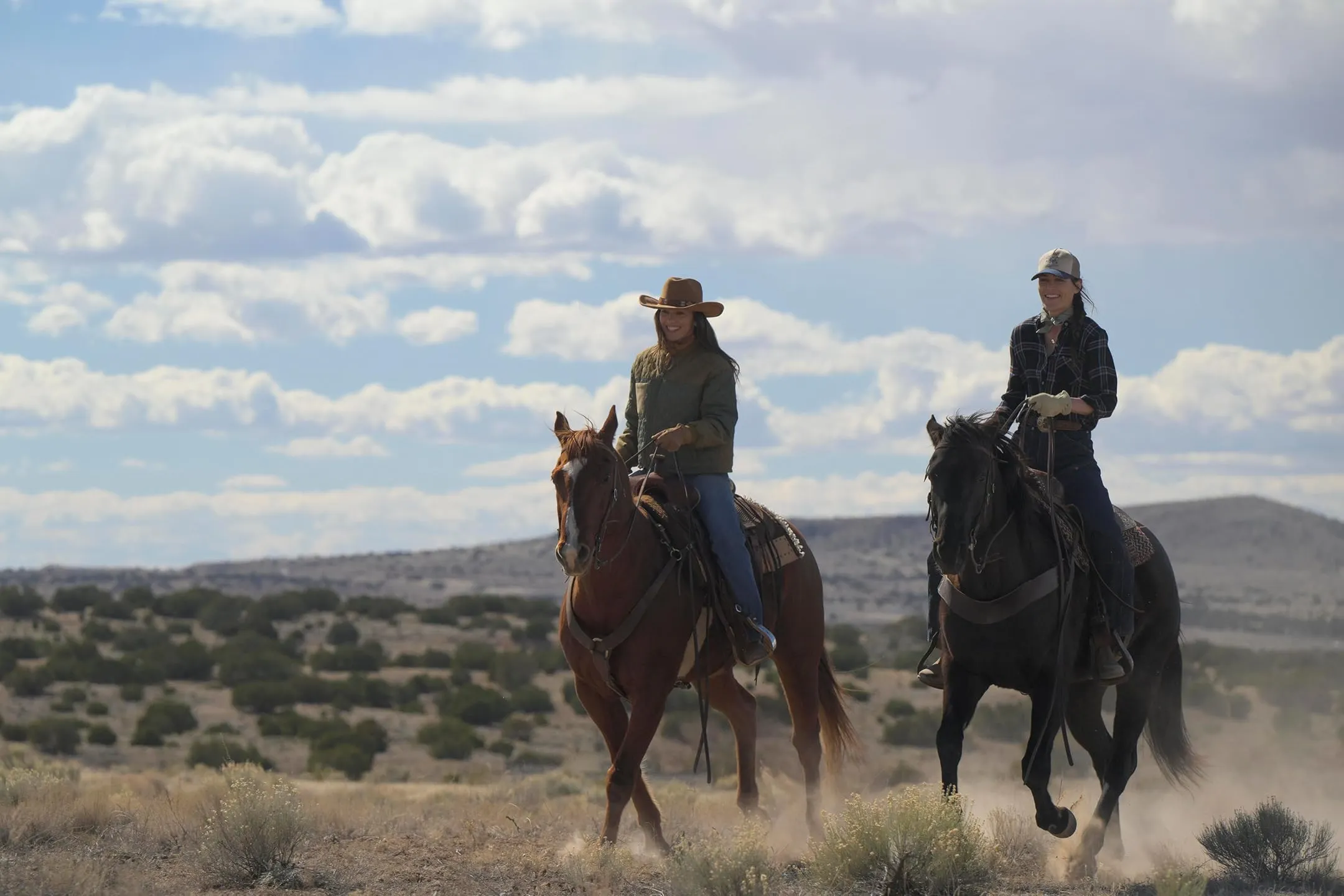Netflix’s Ransom Canyon unfolds across ten episodes on the sun‑drenched plains of a fictional West Texas town, where three rival ranching families guard their property—and secrets—with equal fervor. Adapted from Jodi Thomas’s beloved novels and shaped by creator April Blair, the series introduces Staten Kirkland (Josh Duhamel), a widower wrestling with grief after losing his wife and son.
Opposite him stands Quinn O’Grady (Minka Kelly), a former New York concert pianist turned lavender farmer and co‑owner of the town’s lone dancehall, whose return ignites feelings she once buried. Caught between them is Davis Collins (Eoin Macken), Staten’s ex–brother‑in‑law and pipeline proponent, whose interest in Quinn carries both genuine care and self‑interest.
At first glance, Ransom Canyon feels engineered for binge comfort: predictable romance beats, family soap conflicts, even a tornado’s sudden destruction. Yet beneath the polished veneer, the series gestures toward real‑world debates—land conservation versus corporate interest, emotional labor shouldered by women, and the near‑total absence of people of color in a story set in modern Texas.
Those omissions reveal how streaming platforms can repeat familiar formulas while championing diversity elsewhere. And when a surprise twist disrupts an otherwise steady pace, it offers a brief reminder that even the most comforting stories can carry undercurrents of unrest. In this way, Ransom Canyon both indulges and unsettles, signaling where television might head next when it wants to feel safe while hinting at the questions it has yet to answer.
Cultivation of Place: Ransom Canyon’s Social Landscape
Set beneath a relentless West Texas sun, Ransom Canyon draws its identity from dust‑scarred plains and the steady pulse of ranch life. Here, the Austin Water & Power pipeline proposal cuts through the terrain like an intrusive machine, raising questions about land rights and environmental stewardship at a moment when water politics are front‑page news.
Kirkland Ranch stands as a monument to tradition and loss—its wide decks, weathered beams and modest interiors anchoring Staten’s grief in physical form. Across the fence, Collins and Fuller Ranches reveal two approaches to stewardship: one sleek and corporate‑minded, the other defined by hardened, old‑guard grit.
At the town’s heart, Gracie’s Dancehall offers relief with its strings of lights, hardwood floors and weekly gatherings, even as beneath the laughter simmer tensions about who really holds power. Nearby, the sheriff’s office and the Brigman household serve as twin pillars of authority and family strain, reminding us that law and kinship can carry equal weight.
Rodeo nights and cheerleader‑led pep rallies reinforce communal pride—though they also highlight the series’ unspoken divides of gender and class. When a tornado suddenly rips through the canyon, its cinematic force mirrors the upheaval lurking beneath every handshake and business deal.
Cinematographically, the show favors warm golden‑hour exteriors and muted earth tones in the ranch homes, punctuated by bursts of color at Gracie’s—wide panoramas that remind viewers of how small individual dramas remain against a vast, contested landscape.
Character Arcs and Cultural Resonance
Staten Kirkland (Josh Duhamel) emerges as a portrait of stoicism meeting slow-motion transformation. His grief over wife and son anchors him to dusty ranch roads, yet in scenes facing pipeline surveyors, his rigid posture cracks, revealing deep-seated fears about loss of heritage.
Duhamel’s quiet presence—lined brow, clenched jaw as he reins in a stallion—speaks volumes more than dialogue ever could. When Staten finally shares an unguarded moment of vulnerability with Quinn, the camera lingers on his softened gaze: a single shot that underscores how emotional healing can be a collective endeavor, not a solo cowboy cliché.
Quinn O’Grady (Minka Kelly) embodies modern womanhood in triple form: concert pianist, lavender farmer, dancehall co‑owner. Torn between loyalty to Ellie and dormant feelings for Staten, Quinn juggles labor‑intensive tasks—planting lavender seedlings by dawn, overseeing bar repairs by dusk—with the emotional labor of caregiving.
Kelly infuses these sequences with a grounded warmth; her monologues about community responsibility subtly critique narratives that relegate women to supportive shadows. In a show where male trauma often takes center stage, Quinn reminds viewers that resilience wears many hats—sometimes literally, as she swaps her piano heels for work boots.
Davis Collins (Eoin Macken) serves as both catalyst and mirror: part visionary for town progress, part self‑interested suitor. His campaign for the pipeline echoes real‑world debates on rural development and corporate influence. Macken’s charm masks opportunism—his persuasive town‑hall speeches contrast sharply with tender moments coaching his son Reid, revealing how ambition can coexist with parental devotion. This duality highlights a growing trend in streaming dramas: characters who are neither heroes nor villains, but products of complex socio‑economic pressures.
Paula Jo arrives in a silver Porsche and sky‑high heels, injecting the narrative with vibrant unpredictability. Though framed as an antagonist, her flamboyant entrances and heated exchanges peel back layers of past injustices—hinting at the ways female agency breaches patriarchal confines. Her storyline remains tantalizingly incomplete, mirroring how women’s untold stories often linger on the margins.
Yancy Grey (Jack Schumacher) functions as the classic drifter—a familiar trope—yet his physical labor in wind‑swept fields and whispered disclosures about Randall’s death offer a reminder that outsiders often bear witness to buried truths. His presence underscores how rural communities can both welcome and reject change.
The supporting ensemble deepens the social tapestry: Lauren Brigman and Reid Collins grapple with parental expectations in a football‑obsessed town, reflecting teen struggles against rigid norms. Sheriff Dan Brigman balances law enforcement with personal bias, illustrating how authority figures navigate community loyalty. Ellie Estevez brings entrepreneurial verve to a male‑dominated environment, and James Brolin’s Cap Fuller channels elder wisdom amid shifting power dynamics.
Together, these performances sketch intergenerational contrasts—older characters clinging to legacy, younger ones testing boundaries—while highlighting the show’s tendency to sideline people of color entirely. In an era when representation demands urgency, Ransom Canyon’s mostly white cast signals a disconnect between rural stories and the diverse realities of modern America. This absence may not steer viewers away from its comfort‑style romance, but it does hint at an industry pattern that still struggles to expand beyond familiar profiles of small‑town life.
Plot Architecture and Social Undercurrents
From its first scene—Quinn’s return to Ransom Canyon with lavender seedlings in hand and a pipeline proposal looming—the series stakes out its terrain as much through personal longing as through contested land. The inciting incident instantly juxtaposes Staten’s self‑imposed isolation against a community meeting where Austin Water & Power executives promise progress in exchange for ranchers’ soil. This collision of grief and corporate encroachment sets a tone that, while familiar to viewers of romance‑dramas, hints at deeper debates about resource control in rural America.
As Quinn, Staten, and Davis circle one another, rising tension morphs into a three‑way tug‑of‑war: each proposal for romance or infrastructure carries equal weight. Sidebars—Yancy’s furtive glances and whispered confessions—remind us that even the most comfortable storyline can harbor secrets.
By Episode 5, the tornado arrives as both spectacle and narrative fulcrum: it levels barns, severs power lines, and forces unexpected alliances. When neighbors help rebuild what the wind destroyed, the series nods at collective resilience, even as it skirts the full consequences of environmental disaster.
Late‑season revelations strain viewer expectations. Randall’s death, initially dismissed as accident, reveals undercurrents of blame and old resentments. Paula Jo’s dramatic unmasking at a pipeline hearing serves equal parts catharsis and tease—her true motives only half‑explained, ensuring her return if the show continues. In the finale, the pipeline vote and Staten’s showdown with Davis crystallize central conflicts, yet the unresolved Paula Jo subplot and lingering questions about town demographics underscore how much remains unaddressed.
The romance triangle follows beat‑by‑beat rhythms—longing looks, miscommunications, cliffhangers that close each episode—yet the land‑versus‑development storyline injects occasional moral friction. Teen subplots reflect these same tensions: Lauren’s drive for independence collides with her sheriff‑father’s strictures, while Reid’s quarterback identity frays under academic and athletic expectations. Meanwhile, the mystery thread—Staten’s suspicion of foul play—unfolds in guarded interviews with Sheriff Brigman, grounding melodrama in procedural notes.
Predictable tropes abound: secret babies, surprise inheritances, betrayals of business partners. Still, two genuine surprises—a midnight pipeline rupture and an unexpected confession beneath Gracie’s hardwood floor—deliver jolts that momentarily disrupt the series’ comfort‑food rhythm. By riffing on binge‑style pacing with familiar hooks at each cliffhanger, Ransom Canyon reflects a broader streaming trend: audiences crave the known, yet they hunger for those brief shocks that break the mold.
Genre Patterns and Thematic Crossroads
“Ransom Canyon” leans into romantic escapism with the efficiency of a well‑tuned recipe: sun‑baked exteriors, steamy encounters and a dancehall that never seems short on slow‑dance moments. Its cowboy‑hero versus city‑girl trope plays like wallpaper—familiar, comfortable, impossible to misinterpret.
Beneath this ease sits a story of grief and healing: Staten’s path from silent mourning to tentative trust mirrors Quinn’s nurturing labor in her lavender fields. Farming blossoms here as a private metaphor for renewal, though it occasionally feels more Instagram‑ready than emotionally transformative.
The pipeline debate dramatizes community versus progress, with each town meeting reflecting real‑world clashes over resource control. Characters who hail efficiency can appear cartoonishly corporate, while defenders of legacy sometimes slip into caricature.
Gender roles flicker between progressive and passé: Quinn juggles multiple enterprises with an admirable lack of fanfare, yet the show still frames her as emotional caretaker to Staten’s brooding male trauma. Teen girls chase independence under the glare of overbearing parents, highlighting how much must change before small‑town drama truly diversifies its power dynamics.
Tradition and individual agency dance together in every ranch house and boardroom. Ranching persists as heritage, but characters confront the question of whether legacy demands unyielding loyalty or healthy adaptation.
All of these rhythms depend on formulaic comfort—predictable hooks, secret reveals and business‑betrayal clichés. Yet the absence of meaningful diversity and the reluctance to address deeper social fissures remind viewers that even the coziest soap can carry unanswered questions.
Craft and Canvas: Visual and Sonic Worlds
Wide‑angle lenses dominate Ransom Canyon’s opening beats, revealing rolling acres under an expansive sky—an invitation to inhabit both the beauty and the loneliness of rural life. When the camera slips into Gracie’s, tight close‑ups capture chipped varnish on dance‑hall beams and the subtlest glance exchanged over a whiskey glass. These shifts in framing set up an unspoken contrast between public spectacle and private longing.
The palette feels pulled from sun‑blanched postcards—earthy browns and golds on weathered barns, muted pastels in Quinn’s lavender‑scented rooms. At times, those soft interior hues can feel almost too pristine, as if the show worries that grit might weaken its romantic spells.
Musically, the series rides a trend toward eclectic streaming soundtracks. Country hits like Walker Hayes’s “Fancy Like” rub shoulders with Charley Crockett’s swampy Americana, while Cat Power and Khruangbin offer sly counterpoints. Diegetic moments—Quinn playing piano at dusk, Staten belting a ’90s anthem by moonlight—underscore how music operates as emotional punctuation, even when dialogue falls short.
Costume and production design lean into authenticity: denim jackets scuffed from real ranch work, leather gloves tossed beside lavender bouquets. Quinn’s wardrobe combines practical work boots with lavender‑toned blouses, a subtle nod to her dual roles as caretaker and business owner.
Editing favors a languid rhythm—scenes drift into each other at a pace that mirrors farming schedules—yet romance and conflict are always intercut with surgical precision, ensuring the narrative never stalls. Visual motifs recur: horses kicking cupped dust, sudden storms that frame emotional turning points.
Technically, the sound mix balances wind‑whipped plains and hushed barroom chatter, while simple VFX bring tornado funnels and pipeline drills convincingly to life. In melding these elements, the show signals how streaming dramas can dress familiar formulas in craft that aims to appear both timeless and immediate.
Glimpses Beyond the Canyon
Season 1 settles its central conflicts—the pipeline vote is cast, and the trio’s romantic triangle reaches a tipping point—yet Paula Jo’s true motives remain half‑burled, and the mystery of Randall’s crash still beckons answers.
Staten emerges less guarded, Quinn carves out autonomy beyond mere support, and Davis edges from opportunist toward unexpected ally. Season 2 could deepen these shifting loyalties, chart the town’s rebuilding after the tornado and thrust new players into land‑use debates.
For viewers who relish familiar comforts sprinkled with jolts of revelation, “Ransom Canyon” offers a steady draw—and enough loose threads to tempt them back for another round.
Full Credits
Directors: Amanda Marsalis, David McWhirter, Meera Menon, Michael Offer
Writers: April Blair, Joe Fazzio, Paul Haapaniemi, Laura Nava, Luca Rojas, Jodi Thomas (novel)
Producers and Executive Producers: April Blair, Dan Angel, Amanda Marsalis, Suzanne C. Geiger, Finnian Murray
Cast: Josh Duhamel, Minka Kelly, Lizzy Greene, James Brolin, Eoin Macken, Marianly Tejada, Jack Schumacher, Garrett Wareing, Andrew Liner, Philip Winchester, Meta Golding, Justin Johnson Cortez, Niko Guardado, Jennifer Ens, Kenneth Miller, Hubert Smielecki, Lauren Glazier, Travis Hammer, Matt Medrano, Mimi Fletcher
Director of Photography (Cinematographer): Eric Koretz, Tom Clancey
Editors: Jonathan Angus, Finnian Murray
Composer: Jeff Cardoni
The Review
Ransom Canyon
Ransom Canyon delivers sunlit romance and gentle drama with craft that befits streaming’s binge era, yet its retreat into familiar tropes and near‑absence of diversity undercuts its social promise. Still, a few genuine shocks and character shifts hint at deeper layers beneath the dust‑scattered surface. As a comfort‑style Western romance sprinkled with moments of disruption, it earns a solid recommendation for escapist viewers seeking both warmth and just enough tension to keep them tuning in.
PROS
- Scenic cinematography highlights ranch landscapes and small‑town charm
- Strong lead performances bring depth to familiar archetypes
- Music mixes country hits and indie tracks for emotional texture
- A couple of genuine surprises puncture the predictable pacing
- Warm visual palette creates an inviting atmosphere
CONS
- Heavily leans on well‑worn romance and soap‑opera tropes
- Almost all‑white cast misses an opportunity for true representation
- Teen subplots feel thinner than the adult storylines
- Pacing sometimes stalls between key plot beats





















































